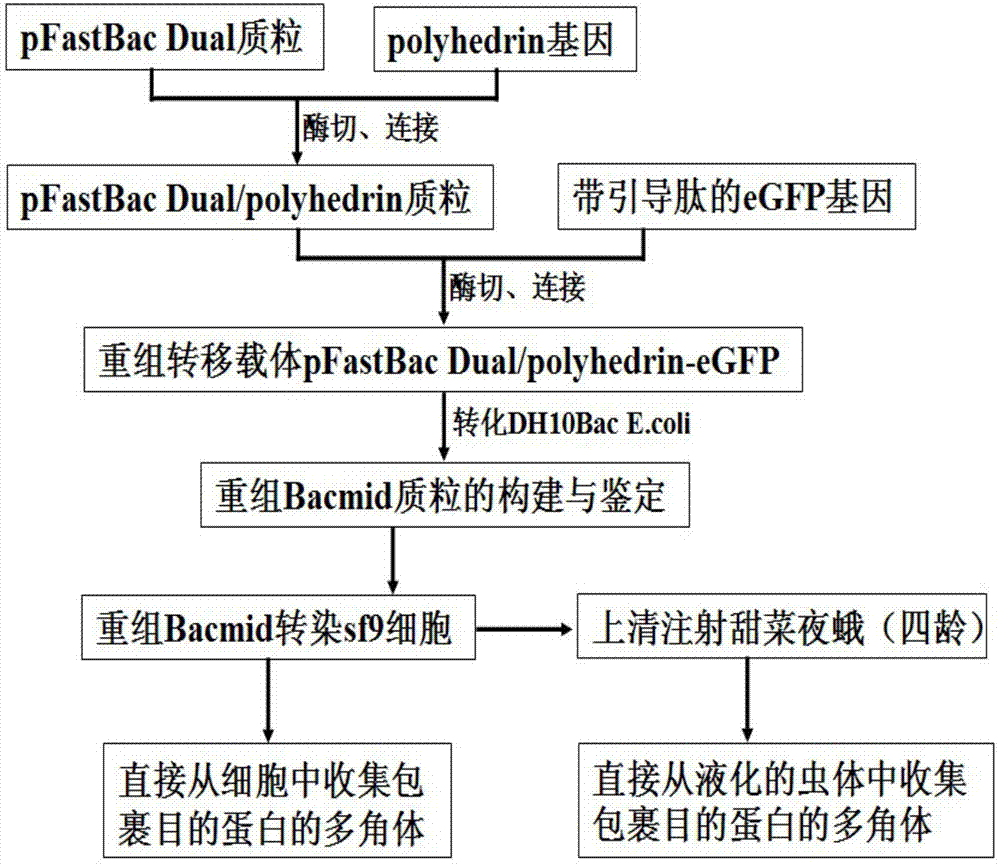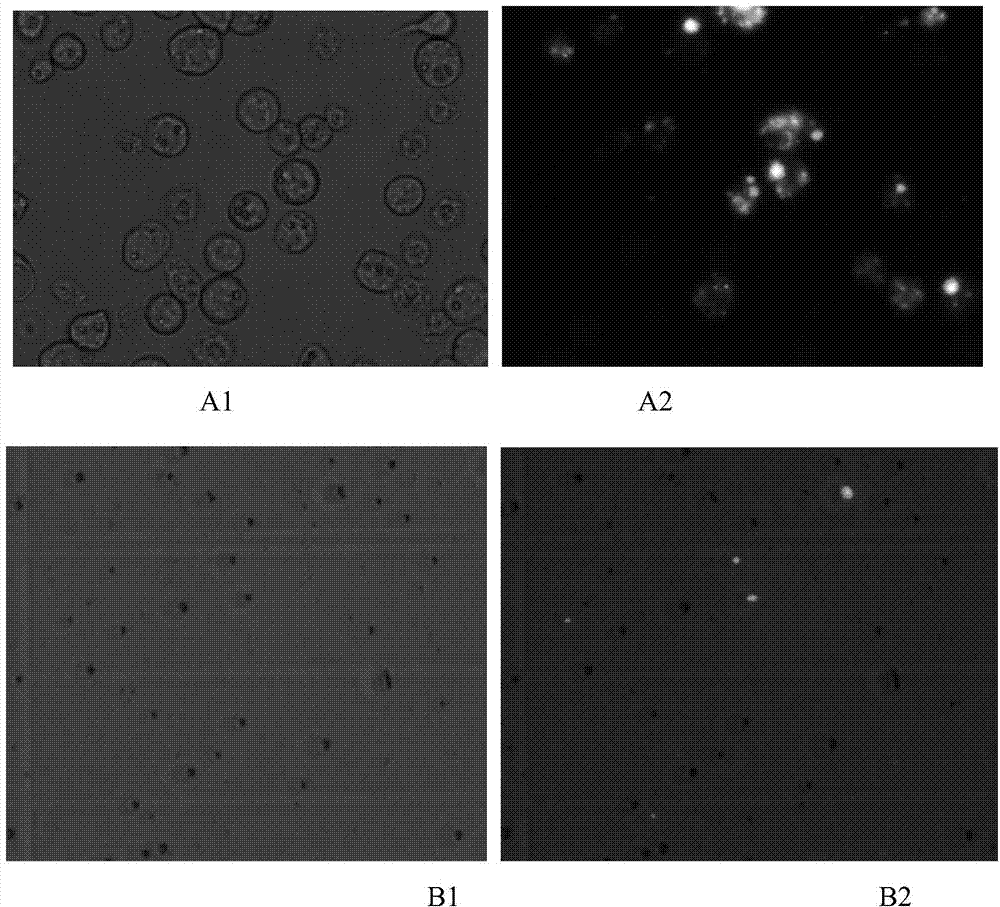Method for realizing efficient covering of foreign protein by using insect virus polyhedron
An insect virus and exogenous protein technology, applied in the biological field, can solve the problems of large polyhedron volume, low packaging efficiency, inconvenient treatment, etc., and achieve the effect of improving packaging efficiency and simplifying methods.
- Summary
- Abstract
- Description
- Claims
- Application Information
AI Technical Summary
Problems solved by technology
Method used
Image
Examples
Embodiment Construction
[0039] Embodiment method,
[0040] 1. Materials:
[0041] Spodoptera frugiperda cells (sf9), pFastBac Dual plasmid, and DH10Bac were purchased from Invitrogen, USA;
[0042] DH5α strain was purchased from TaKaRa Company;
[0043] The polyhedrin gene of Bombyx mori cypovirus (BmCPV) (gb|M19112.1|, described as NO1 in the sequence listing), the guide gene composed of H1 signal peptide and flexible linker peptide (As described in NO2 in the sequence listing, specially designed by the present invention), eGFP gene (gb|KC710230.1|, as described in NO3 in the sequence listing) were artificially synthesized by Shanghai Bioengineering Company;
[0044] Remarks: In NO2 of the sequence list, 1-90bp is the H1 positioning signal peptide, and 91-126bp is the flexible linker peptide (underlined).
[0045] High-fidelity Tag enzymes, various restriction enzymes, dNTPs, enzyme linkage kits, DNA gel recovery kits, etc. were purchased from TaKaRa Company;
[0046] Sf-900II SFM serum-free med...
PUM
 Login to View More
Login to View More Abstract
Description
Claims
Application Information
 Login to View More
Login to View More - R&D
- Intellectual Property
- Life Sciences
- Materials
- Tech Scout
- Unparalleled Data Quality
- Higher Quality Content
- 60% Fewer Hallucinations
Browse by: Latest US Patents, China's latest patents, Technical Efficacy Thesaurus, Application Domain, Technology Topic, Popular Technical Reports.
© 2025 PatSnap. All rights reserved.Legal|Privacy policy|Modern Slavery Act Transparency Statement|Sitemap|About US| Contact US: help@patsnap.com



